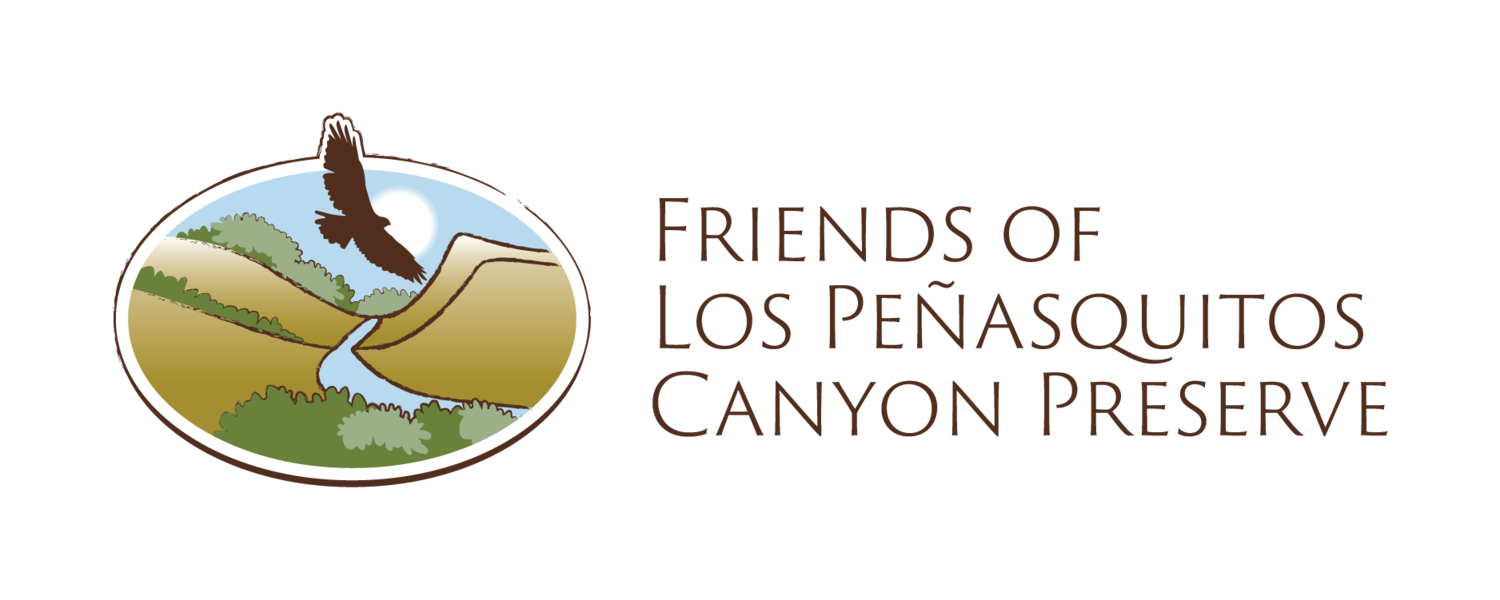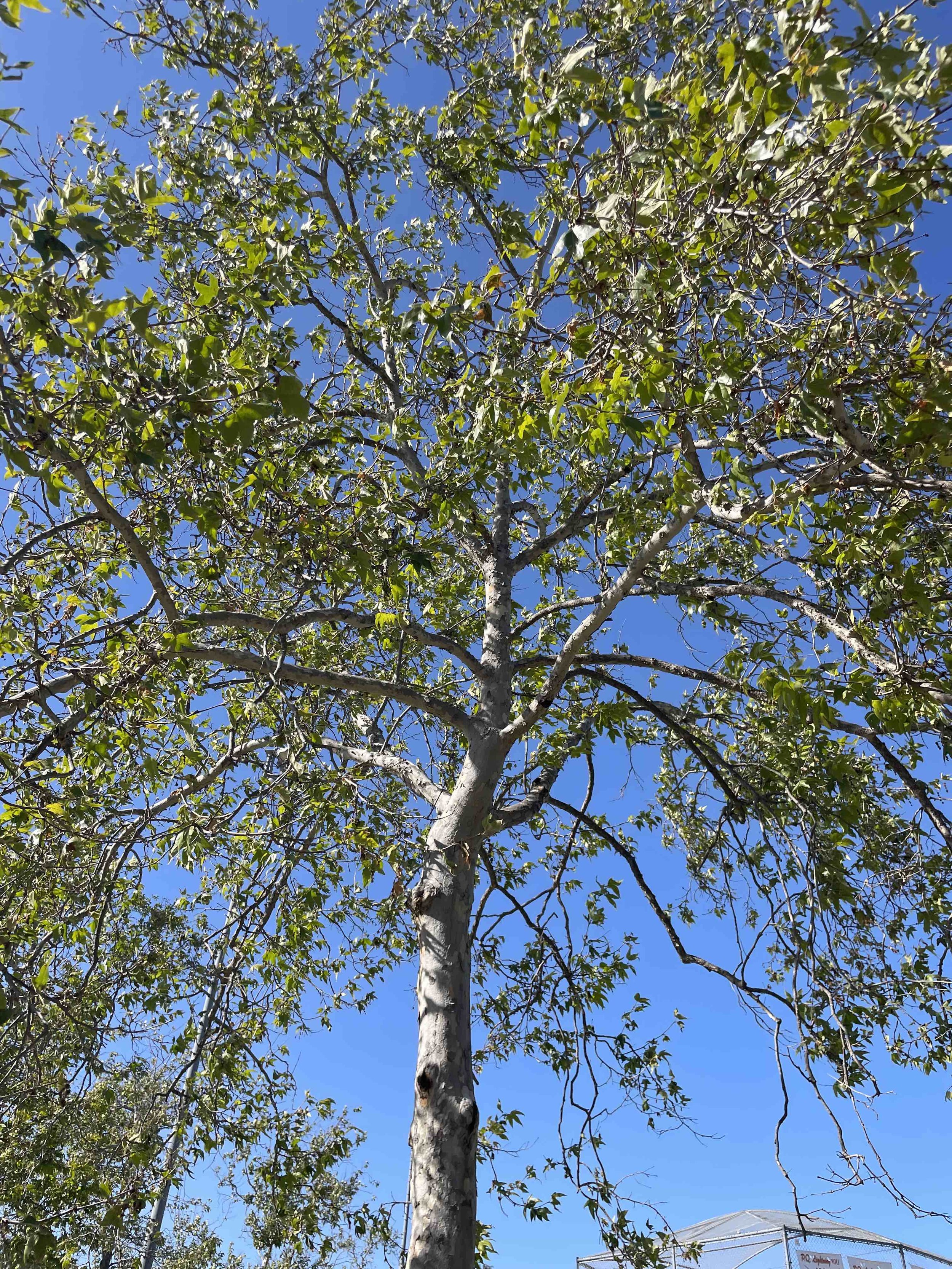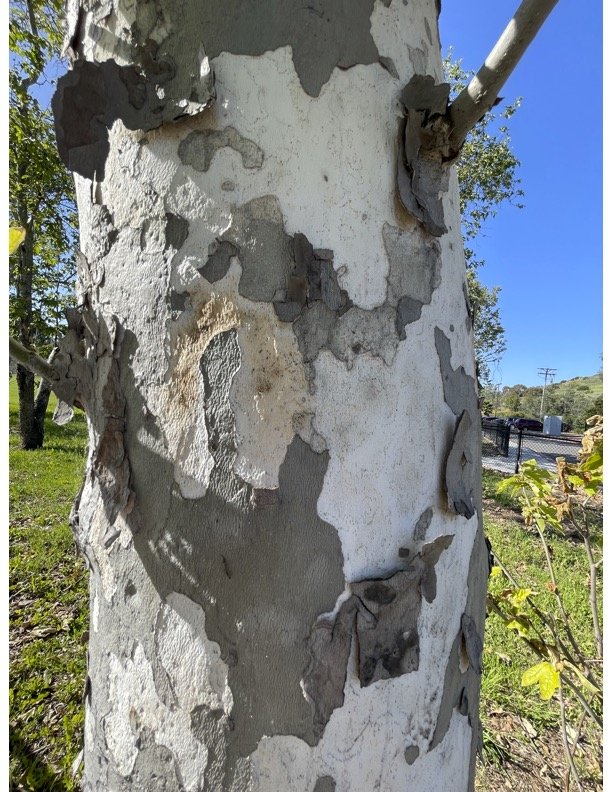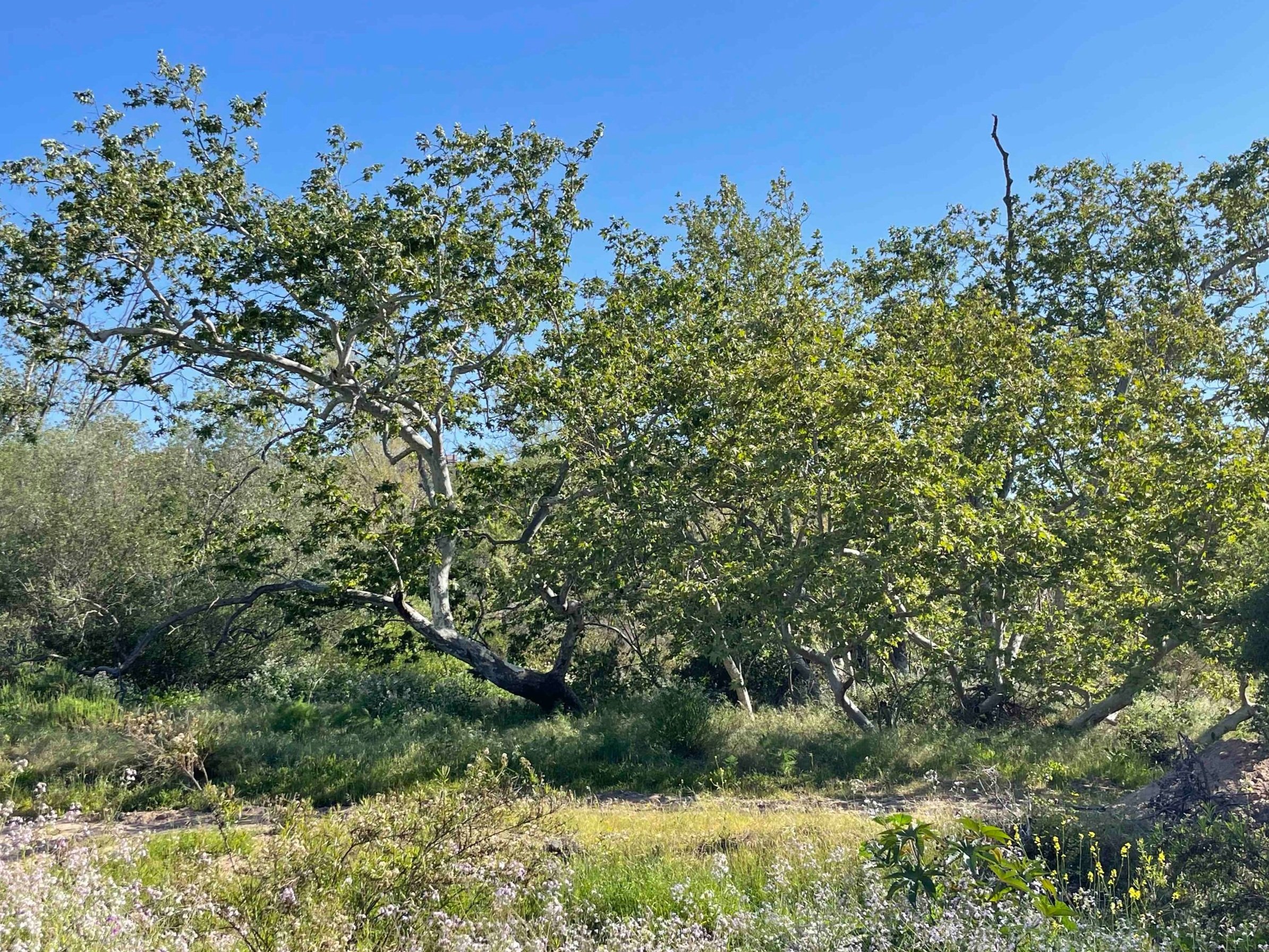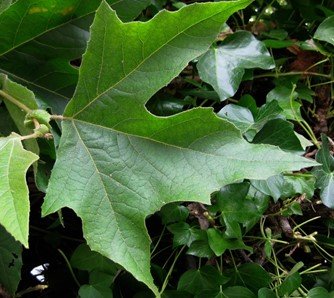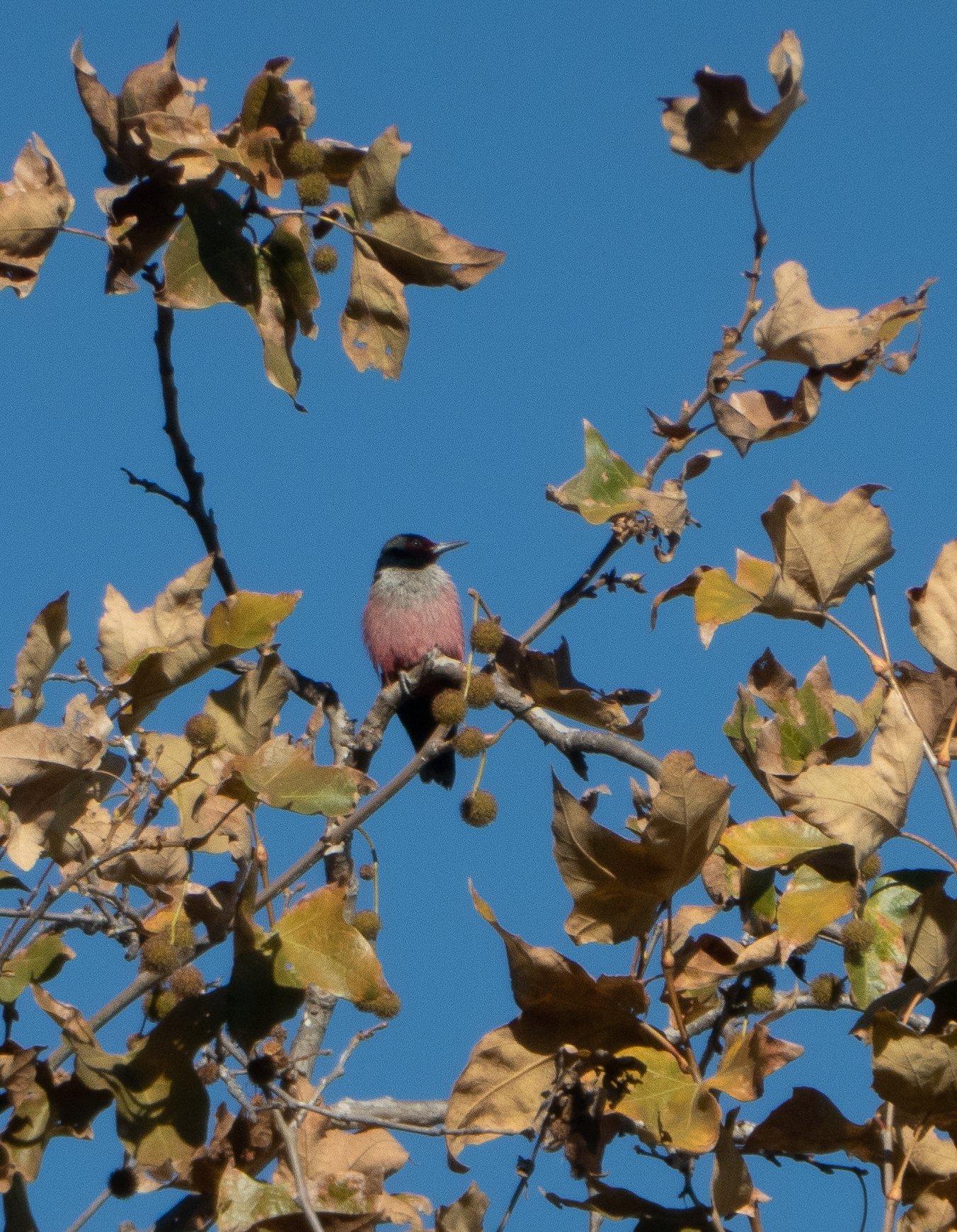Sycamore Trees
By Les Braund
Sycamore trees, Platanus racemosa, abound in Penasquitos Canyon. They are found above the level of the stream where the soil retains some moisture throughout the year. In our canyon they can grow up to fifty or sixty feet high with trunks up to three feet in diameter. Our species is one of six in North America.
Sycamore trees have the largest leaves of any tree in North America. The leaves were used by local Indians to wrap food for storage.
The bark is referred to as exfoliating, separating in small pieces. The colors of the bark vary from near white to tan to gray. There are reports that the bark was used to make coffee flavored drink. Due to the exfoliating bark, there are few lichens found on these trees.
Sycamore trees are monoecious, meaning they have both male and female organs on the same tree. They are wind pollinated.
The seeds of Sycamores are large and round, the size of golf balls. The seed are consumed by birds while on the tree and also when they drop to the ground along with other ground feeders like squirrels.
Sycamore trees host at least one beautiful butterfly, the Western Swallow Tail, Papilio rutulus. They also host at least one moth. In addition, a number of mushrooms can be found under the canopy. It is reported that morels are found under Sycamore trees, but I have never found that to be true. Other animals that use the trees are red tailed hawks, humming birds, numerous other birds for nesting, and raccoons.
Western Swallowtail
Sycamore trees host most of the mistletoe found in the canyon in the tree’s upper branches. Lastly, Sycamore trees are good carbon sinks.
